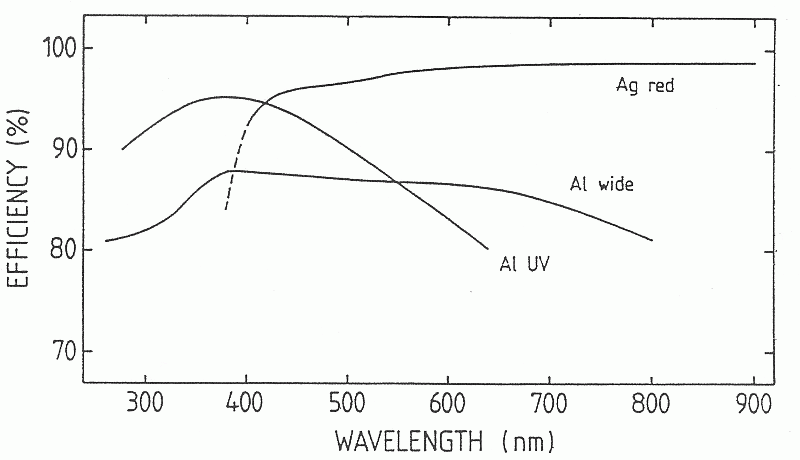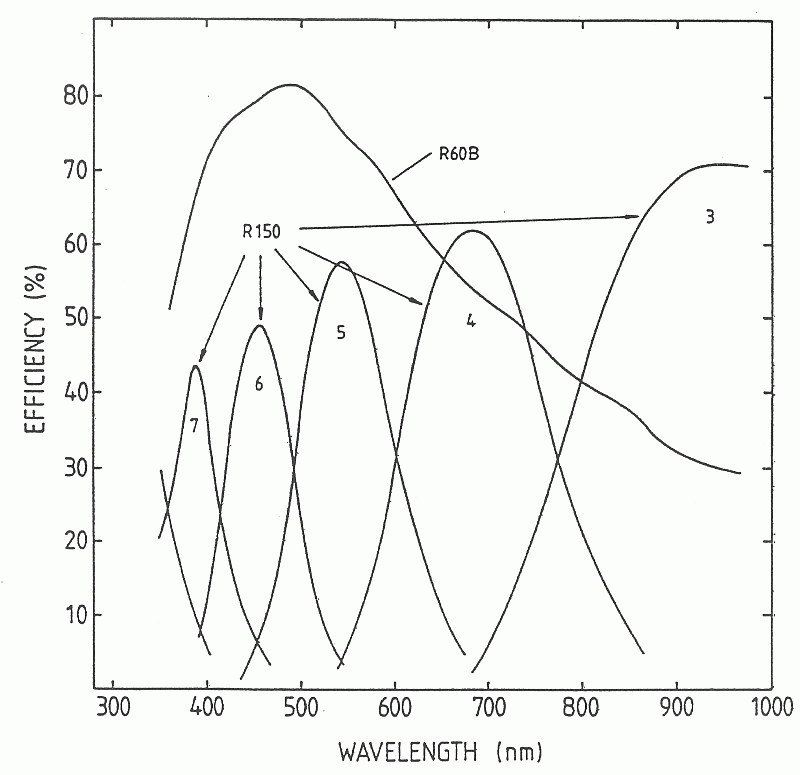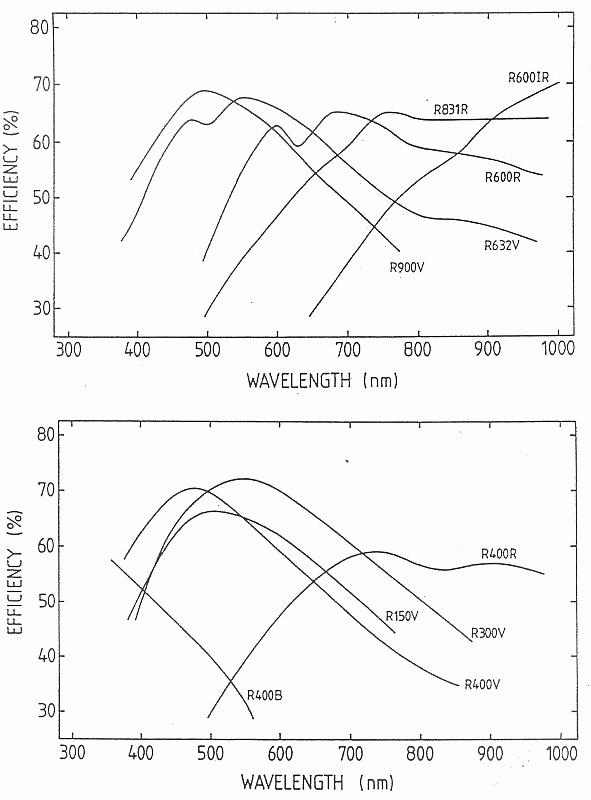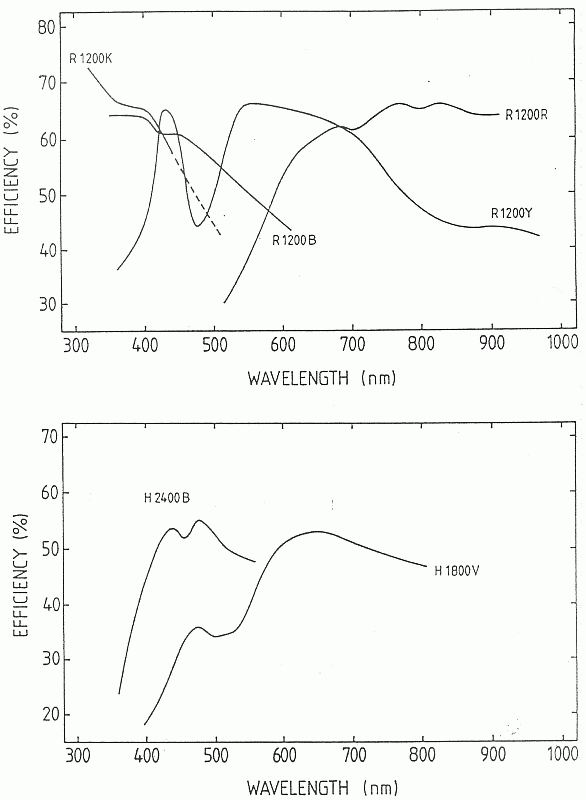 and
and  respectively.
respectively.




The efficiency of the IDS is best considered as the product of three
components; collimator, grating and camera.
The efficiency curves of the IDS collimators and gratings
are given in Figures  and
and  respectively.
respectively.

[ TIFF ]
Figure: Efficiency curves for the IDS collimators

[ TIFF ]

[ TIFF ]

[ TIFF ]
Figure: Efficiency curves for the IDS gratings
The efficiency of the cameras can be split into two components, one due to the geometry of the cameras (e.g. size of the central obstruction) and one due to losses at each coated surface. For small grating angles, the geometric efficiencies of the 235 mm and 500 mm cameras are about 67 per cent and 73 per cent respectively. At large grating angles (greater than about 44 and 60\ for the 235 and 500 mm cameras respectively), the geometric efficiency drops off rapidly due to overfilling of the grating. This will occur for example when the 2400B grating is used in the red.
Each camera contains two aluminium mirrors, with a reflectivity of perhaps 85 per cent, and four air/glass surfaces with single layer anti-reflection magnesium fluoride coating, each of which has a reflectivity of about 2 per cent at 5500 Å. We therefore expect the 235 mm and 500 mm cameras to have total effective efficiencies of 45 per cent and 49 per cent respectively.